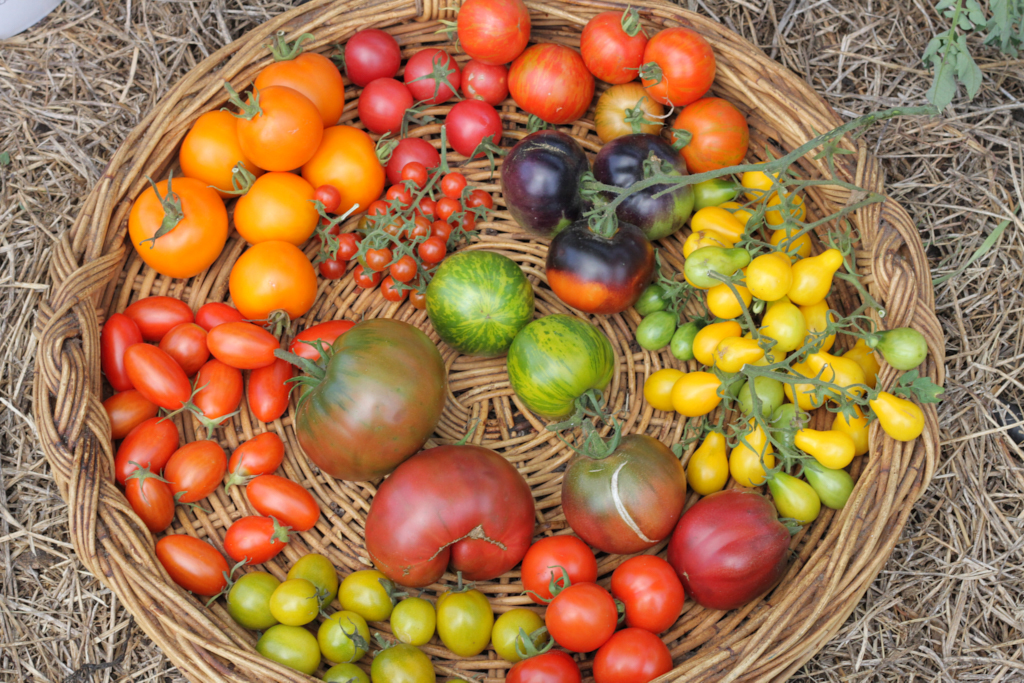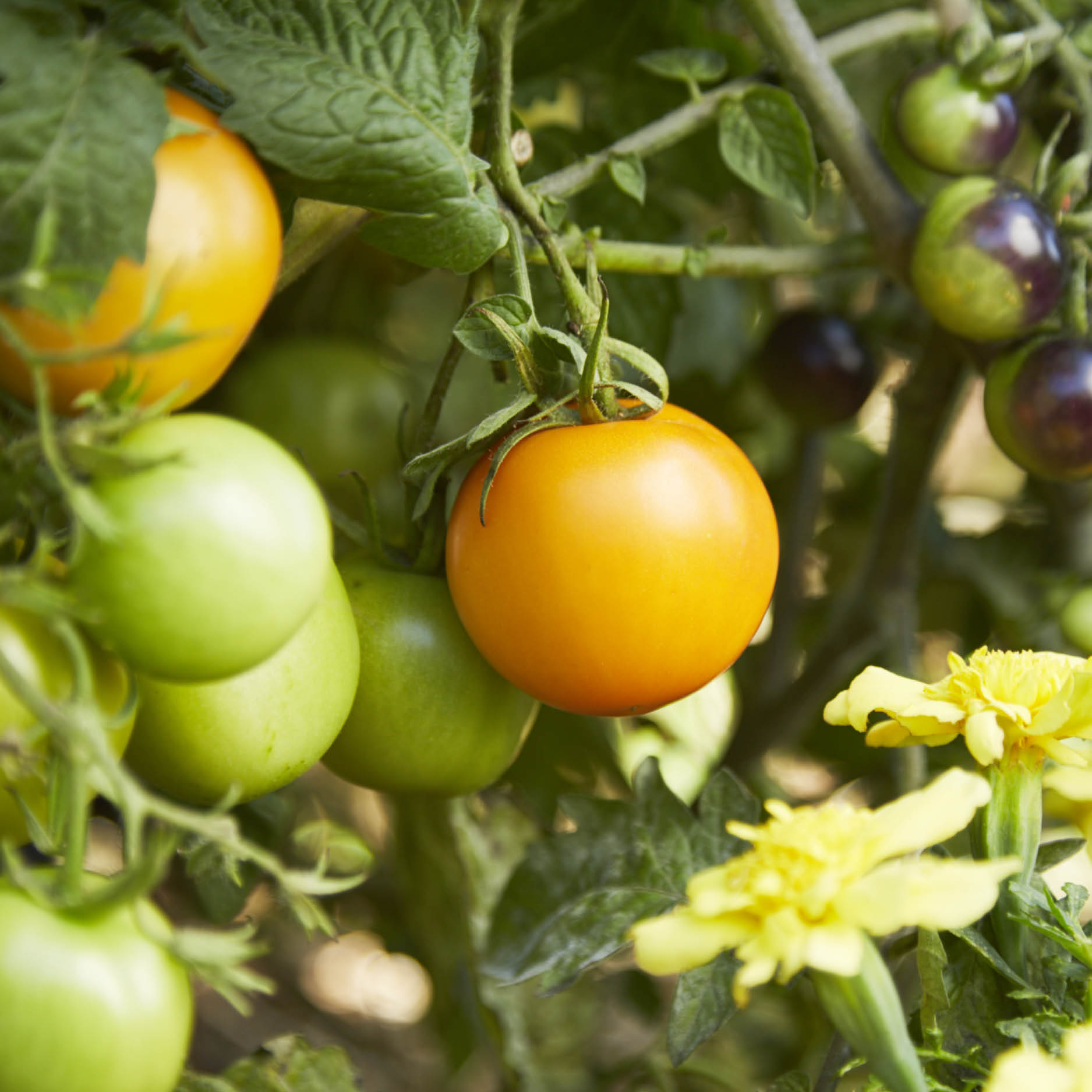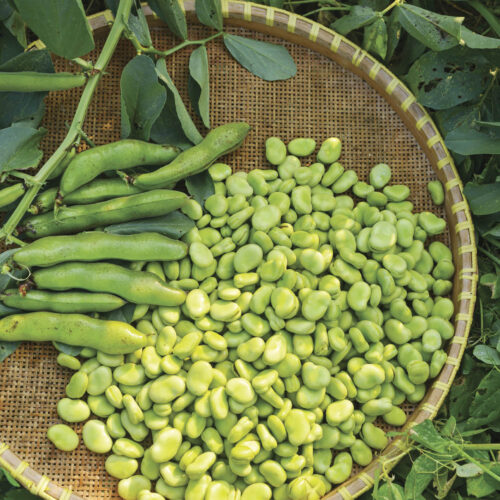Tomatoes in pots
2019-10-11T05:20:20+11:00
Karen Sutherland tells us how to grow tomatoes in pots.
What type of pot
Plastic pots are lighter to move around to catch early sun or move out of hot afternoon sun. Black plastic pots are great for catching early season heat, but in the middle of summer, paler colours that deflect heat are better (or you can line the outside of a black pot with something reflective).
Your choice of pot will depend on your positioning and moving needs. I grow tomatoes on my garage roof in old recycling tubs. Old, foam fruit boxes are also suitable for small bush types, if at least 30cm deep. Some other options to consider include:
Self-watering plastic pots are great when time is scarce, and they look after your plants’ water needs when you’re away for a weekend.
Terracotta pots should be sealed inside first with a water-based terracotta sealer to reduce moisture loss. Glazed terracotta pots are a more water-efficient alternative and look great, but are harder to move around. Wheeled plant stands and trolleys are an option if you have heavy pots.
Green woven planter bags are easily moved around and then stored when not in use.
Hanging baskets and wall garden pots are suitable only for the smallest tomato plants, and remember that these are quick to dry out, so will need frequent attention, or an automatic watering system.
Size it up
Indeterminate, or staking tomatoes need to be grown in very large pots, of at least 40–50cm diameter. They can also be grown in larger green woven planter bags. The 45L bags or bigger are best for these tomatoes, and 45L for dwarf tomatoes. Bags are available at 25L and 30L for smaller plants
Determinate and dwarf plants can be grown in smaller pots, but always research your tomato cultivar to make sure the pot will be big enough, as even determinate and dwarf plants can vary in size quite a lot.
Getting started
Tomato seed are best started in punnets, small pots or multi-celled seed trays. Plant seed, into good quality seed raising mix, two into each cell or pot. Cover with a thin layer of the mix and water gently. Put into a warm position, but not direct sunlight. Keep moist until the seed germinates, and continue to keep moist but not too wet until seedlings are at least 5cm tall.
Plant these seedlings (or purchased ones) into pots with the seedlings deep enough so that the first seed leaves are covered. Water with dilute seaweed extract and if the weather is still cool, cut the bottom off a plastic bottle and pop it over the top as a mini-greenhouse. Make sure you remove the bottle once the weather warms up.
Avoid cheap potting mix
Like soil, the potting mix you use is vital to the health of your plants and a fruitful harvest. Always read the ingredients before buying, as some contain water-saving crystals, which are not organic. Coconut coir peat added to your potting mix is an alternative to help hold more moisture. To minimise disease, always use fresh potting mix, rather than soil or old mix that has been used for tomatoes or any plants from the Solanaceae family in the last two years.
When building up nutrients in your potting mix, remember potting mix is not soil. Don’t add large amounts of compost to the mix. It can clog up the drainage spaces, giving your tomatoes wet feet. Instead, add a layer of compost on top and nutrients will slowly leach into the mix without causing clogging. Worm compost added in small amounts won’t clog the mix, nor will blood and bone or organic pelletised manures. You don’t need to add all of these, just choose one, they are all slow release and will gradually feed your tomatoes
Liquid feeds
Liquid feeds are ideal for pots, boosting plants that are already growing strongly, while not affecting drainage. Use seaweed solution for trace elements, growth boosting and better tolerance of temperature extremes. Organic, off-the-shelf fish extract fertilisers provide all the major and minor nutrients and will help plants flower and fruit. Water these on every few weeks.
Banana skin tea is high in potassium so perfect for encouraging flowering and fruiting. Soak 10 banana skins in 5L of water for 10 days, before using. Worm leachate tea, compost tea and other weed or herb teas are all worth using, too, as they all add a range of nutrients, as well as beneficial bacteria, fungi and other micro-organisms. Always dilute liquid feeds to the colour of weak tea before using.
For any potted tomatoes, pay close attention to watering. In very hot weather, they may need a drink up to three times a day.
For more gardening tips and ideas get the latest issue of ABC Organic Gardener Magazine here.







